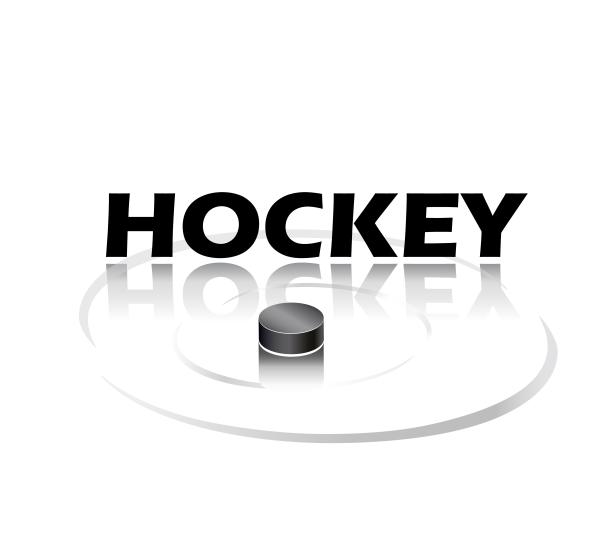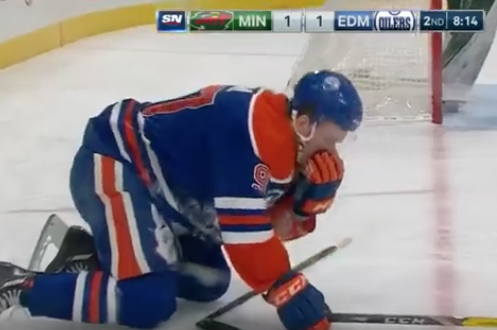
As players adapt this season to the National Hockey League's updated concussion protocol, several who have taken hits to the head during games received on-the-spot medical evaluations. But as to whether the safety guidelines are having their intended effect, to answer that question many onlookers are scrutinizing an incident involving Connor McDavid on Dec. 4
The reason is that the "injury," which required his removal from the game at a crucial moment, could have been interpreted in different ways. As such the situation has invited observers to more closely examine how the protocol works (as well as the ways that it may not), and to offer suggestions to improve it.
As detailed in Part 1 on this topic, McDavid was flagged for a possible concussion by NHL "spotters" who identify players who have absorbed a blow to the head. In this case, the captain of the Edmonton Oilers tripped and hit his chin on the ice, and moments later during a play stoppage the NHL's leading scorer was told to leave the game to be evaluated by medical personnel. Surprised by his mandated exit, McDavid complied, missing a key moment for the Oilers to take the lead. Edmonton went on to lose the game.
 "I was pretty shocked, to be honest. I hit my mouth on the ice, you reach up and grab your mouth when you get hit in your mouth," McDavid said afterwards, as reported by NHL.com. "I think it's a pretty normal thing. Obviously, the spotter thought he knew how I was feeling. He pulled me off."
"I was pretty shocked, to be honest. I hit my mouth on the ice, you reach up and grab your mouth when you get hit in your mouth," McDavid said afterwards, as reported by NHL.com. "I think it's a pretty normal thing. Obviously, the spotter thought he knew how I was feeling. He pulled me off."
This spotter, known as a "Central League Spotter," views all potential incidents from "the NHL Offices via live game broadcast using multiple feeds." This person determines if an on-ice incident matches any of the league's six "Symptoms and Signs," which specify in detail when a concussive incident may have occurred.
The authority of the Central League Spotter supercedes that of rinkside spotters at the game -- and even the referees on the ice -- and has the final word, according to the NHL's Concussion Evaluation and Management Protocol. "Removal and evaluation of a Player will be required if the Central League Spotter determines that a mandatory evaluation is warranted, even if the In-Arena League Spotter and/or Club personnel disagree."
But did the procedure work as intended, in this case to improve McDavid's safety? Let's dig a little deeper into the protocol, which starts with pre-season medical testing.
In order to eventually determine whether an in-game concussion has occurred, baseline testing for all NHL players must first be conducted in training camp. Those results are stored on a cloud-based system and can be accessed by team trainers and physicians using an app known as the X2 SCAT3. And when McDavid was evaluated on the spot using the app, the two sets of results were compared.
Then, as for whether he could return to the game, according to the NHL's guidelines, "the Club Physician shall assess the Player in person and shall be solely responsible for determining whether or not the Player is diagnosed as having a concussion."
McDavid was told that he had not suffered one, and he returned to play roughly a half-hour later.
What set all of this in motion was that the Central League Spotter saw McDavid grab his chin. And while he may have been checking to see whether he was cut or bloodied -- and he wasn't reaching for his skull -- the protocol states that if a player "clutches his head (including any part of his face)," then he is subject to immediate medical evaluation. And that's what took place.
It's also why there was disagreement as to whether McDavid injured his head, or brain. And it provokes the idea that incidents will arise in which the spotter needs to have some decision-making discretion. But right now, in that regard, the protocol is rigid.
A second suggestion to improve the protocol is to make accommodations for goalies who suffer head blows. That's because while a skater who must leave the ice is one of just 18 players, and his absence can be managed more easily, a goaltender leaving the game for a half-hour or more is wholly disruptive. Back-up goalies coming in cold usually tend to be less effective, and there have already been instances where a starting goalie's exit for an evaluation reversed the course of a game.
And lastly, a potential benefit: the new protocol may lead to a decrease in fighting.
Professional hockey has long tolerated and justified fisticufs during games. But now the NHL's new procedures require players who get "punched in the head (including any part of the face) by an ungloved fist during a fight" to be flagged by spotters for medical evaluation. But if every fight raises the possibility that a player gets punched and will be yanked from the game, then the prospect of going toe to toe with another skating pugilist may lose its appeal.



